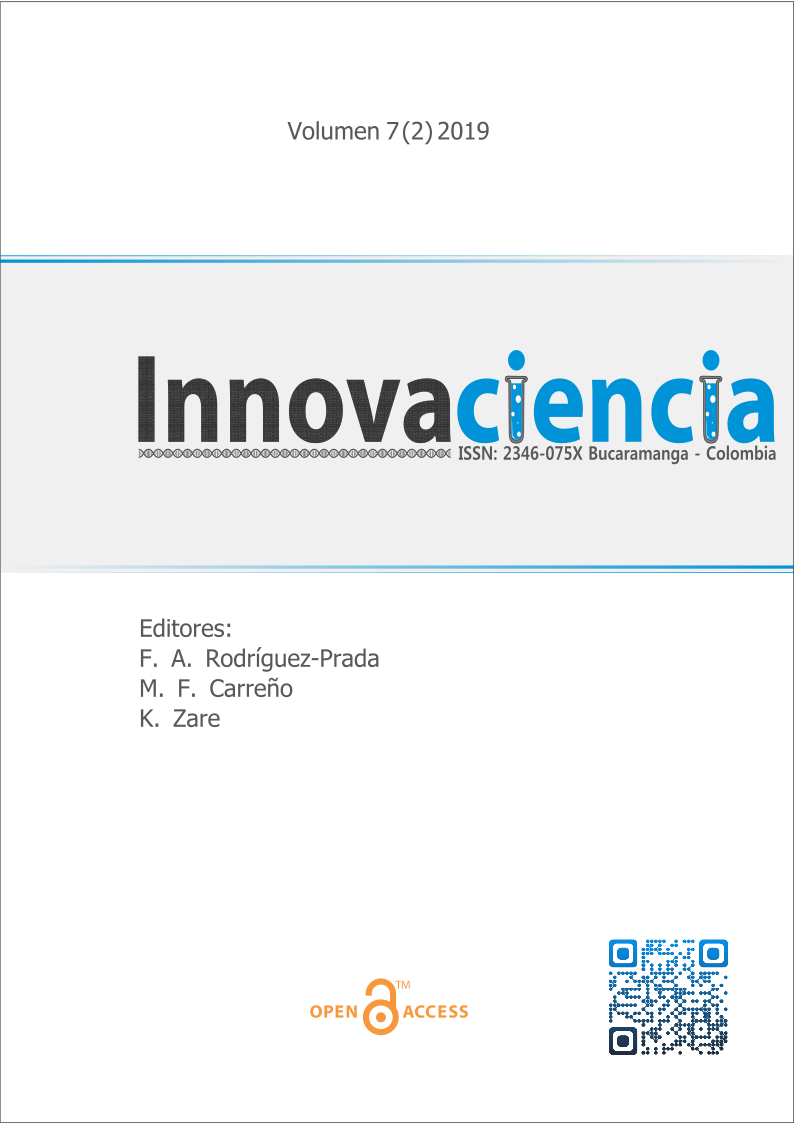Factores influyentes y determinación de la resistencia del hormigón in situ, utilizando método de giro.
DOI:
https://doi.org/10.15649/2346075X.766Palabras clave:
Concrete strength; In-situ testing; Twist-off methodResumen
Concrete strength represents by far the most critical property of concrete. It represents the mechanical properties of concrete. On-site evaluation of concrete strength remains the fundamental challenge in the condition assessment of existing infrastructure. Although standard laboratory methods can be typically used but most of these testing methods are costly and time-consuming. Among the in-situ methods, the “twist-off ” method with very slight damage is genuinely a convenient, fast and also low-cost technique that provides accurate results for engineers. In this study, the twist-off
method has been used for the assessment of in-situ strength of the 30 concrete structures in Qazvin in Iran. The results showed structures studied had a strength of 45 to 600 kg/cm2 and the average is about 200 kg/cm2. The observed variation is very high, as well as a significant difference between the compressive strength of the columns, and the floors of the buildings that all indicate non-standard concrete mixing and inadequate control over construction. However, according to the past experience and results of the samples, some recommendations in this regard have been suggested.
Referencias
Bungey, J.H., and Millard, S.G. (1996), “Testing of concrete in structures. Blackie Academic and Professional” London. https://doi.org/10.4324/9780203487839
Carino Chairman, “In-place methods to estimate concrete strength”, Reported by ACI committee 228.
BS188: Part 116, (1983), “Method for determination of the compressive strength of concrete cubes”, British Standards Institution, London.
ASTM C39: Part 94, (2018), “Standard test method for compressive strength of cylindrical concrete specimens”, ASTM International, West Conshohocken, PA, 2018.
BaalbakI., W., Aitcin, P.V., and Ballivy, G. (1992). "On predicting modulus of elasticity in high-strength concrete".
ASTM C900-15, “Standard Test Method for Pullout Strength of Hardened Concrete”, ASTM International, West Conshohocken, PA, 2015.
Long, A.E., Murray, A.Mc.C., (1984), “The pull-off partially destructive test for concrete”, Spec. Publ. SP82, 17, American Concrete Institute, Detroit, 327-350.
Johansen, R., (1975), “In-situ strength evaluation of concrete-the “break-off” method”, Concrete International, 1, No.9, 45-51.
ASTM C1150-96, 1996, “Standard Test Method for the Break-Off Number of Concrete” (Withdrawn 2002), ASTM International, West Conshohocken, PA, ,
Jedidi Malek, Machta Kaouther , (2014),”Destructive and Non-destructive Testing of Concrete Structures”.
ASTM C42: Part 94, (1995), “Standard test method of obtaining and testing drilled cores and sawed beams of concrete”, American Society for Testing and Materials, Philadelphia. An annual book.
BS188: Part 120, (1983), “Method for determination of the compressive strength of concrete cores”, British Standards Institution, London.
ASTM C318, (2018), “Building code requirements for structural concrete and commentary”, American Society for Testing and Materials, West Conshohocken, PA.
ASTM C31, (2019), “Standard Practice for Making and Curing Concrete Test Specimens in the Field”, West Conshohocken, PA,
ASTM C617, “Standard Practice for Capping Cylindrical Concrete Specimens”, ASTM International, West Conshohocken, PA, 2015.
ASTM C873: Part 94, (2015), “Standard Test Method for Compressive Strength of Concrete Cylinders Cast in Place in Cylindrical Molds”, American Society for Testing and Materials, West Conshohocken, PA.
ASTM C470, (2015), “Standard Specification for Molds for Forming Concrete Test Cylinders Vertically” American Society for Testing and Materials, West Conshohocken, PA.
Malhotra, V.M., Carino, Nicholas J., (2003), ”Handbook on Nondestructive Testing of Concrete” CRC Press; Second edition. https://doi.org/10.1201/9781420040050
ASTM C 805-85, “Test for Rebound Number of Hardened Concrete”, U.S.A., 1993.
BS 1881: Part 202, 1986: Recommendations for Surface Hardness Tests by the Rebound Hammer, BSI, U.K., 1986.
ASTM C 597-83 (Reapproved 1991), “Test for Pulse Velocity Through Concrete”, U.S.A.
BS 1881: Part 203, 1986, “Measurement of Velocity of Ultrasonic Pulses in Concrete”, BSI, U.K.
Leshchinsky, 2000, ”concrete strength by combined non-destructive methods simply and reliably predicted”.
Mahmood Naderi, “Assessing the in situ strength of concrete, using new twist-off method”.

Descargas
Publicado
Cómo citar
Número
Sección
Altmetrics
Descargas
Licencia
Todos los artículos publicados en esta revista científica están protegidos por los derechos de autor. Los autores retienen los derechos de autor y conceden a la revista el derecho de primera publicación con el trabajo simultáneamente licenciado bajo una Licencia Creative Commons Atribución-NoComercial 4.0 Internacional (CC BY-NC 4.0) que permite compartir el trabajo con reconocimiento de autoría y sin fines comerciales.
Los lectores pueden copiar y distribuir el material de este número de la revista para fines no comerciales en cualquier medio, siempre que se cite el trabajo original y se den crédito a los autores y a la revista.
Cualquier uso comercial del material de esta revista está estrictamente prohibido sin el permiso por escrito del titular de los derechos de autor.
Para obtener más información sobre los derechos de autor de la revista y las políticas de acceso abierto, por favor visite nuestro sitio web.




















